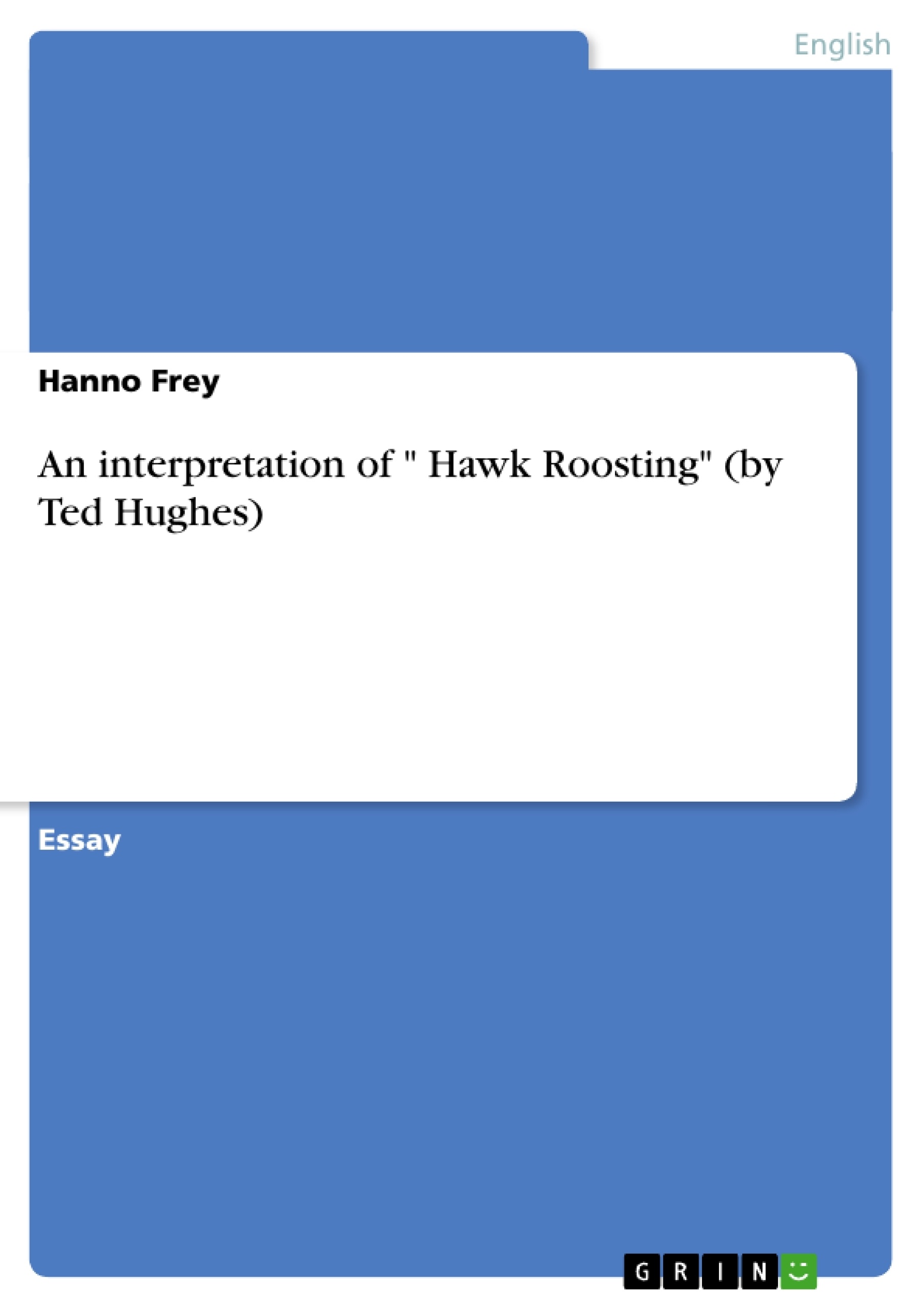Writing a poem is a highly complex process which at the same time enables and forces the
writer to express his ideas in (mostly) only a few words or sentences. It is thus very important
to use a dense language which very carefully picks from a potentially broad semantic range.
The aim of this selecting process must be not only to transmit isolated meanings of words but
also to create an atmosphere which somehow enables the reader to reconstruct the feelings
the author had when he1 wrote his poem. In order to do so there are different possibilities: It is
possible to make use of the connotations words possess and which add additional meaning to
their denotations. Moreover it is also a well used means to embed different rhetoric devises in
a text in order to intensify its density and to increase its emotionality. This can be done on the
basis of two different levels: Firstly there are rhetoric figures on a syntactic level. Examples
of that kind relate to the position of words (inversion, parallelism...), the phenomenon of
repetition (anaphors, reduplicatio anadiplosis...) or the quantity of expressions (amplifications,
antithesis...). Secondly there are the so- called tropes which represent rhetoric devises on a
semantic level. The word “tropes” originates in Greek and designs an “unusual expression”.
Tropes do therefore occur when one expression is replaced by another which derives from a
different (semantic) context. Examples of the second kind are metaphors, allegories and irony.
In the following interpretation of the poem “Hawk Roosting” by Ted Hughes I am going to
refer to some of the rhetoric devises which I have just presented. In doing so I am going to
prove that this poem is a perfect example of a language which is at the same time emotive and
descriptive and therefore combines two most interesting and fascinating aspects of poetry. As
I am going to show the author does not use many different stylistic devices but rather
concentrates on one single one. Nevertheless, this one is sufficiently enough, well chosen and
serves its purpose.
1 For reasons of space I am only going to use masculine forms in this essay.
Table of Contents
- Introduction
- The Poem
- Hawk Roosting (by Ted Hughes)
- The Plot
- Style and Structure
- Interpretation
- Conclusion
Objectives and Key Themes
This essay aims to analyze the poem "Hawk Roosting" by Ted Hughes, focusing on the language and rhetoric used to convey the hawk's perspective and its position in the natural world. The analysis examines the use of stylistic devices and explores how they contribute to the poem's overall meaning and impact.
- The hawk's perspective as the center of nature
- The hawk's dominance and control over its surroundings
- The use of language to create an atmosphere of power and authority
- The poem's structure and its connection to the hawk's physical form
- The role of rhetoric and stylistic devices in conveying the hawk's worldview
Chapter Summaries
The introduction discusses the complexity of writing poetry and the importance of using dense language to convey meaning and emotion. The chapter outlines the different levels of rhetoric, including syntactic and semantic devices, and provides examples of each.
The chapter on the poem "Hawk Roosting" explores the text as an inner monologue of a hawk reflecting on its position in the natural world. The hawk views itself as the center of creation, possessing power and control over its surroundings. The chapter analyzes the hawk's statements and actions, highlighting its dominant and assertive nature.
The chapter on style and structure examines the form of the poem, highlighting its consistent structure and the lack of rhyme. The use of statements, parallelisms, and repetition are analyzed, revealing how they contribute to the hawk's egocentricity and sense of authority.
Keywords
This essay explores the use of language and rhetoric in Ted Hughes' "Hawk Roosting," examining the hawk's perspective as the center of nature, the poem's structure and style, and the role of stylistic devices in conveying the hawk's dominance and worldview. Keywords include: rhetoric, stylistic devices, language, power, authority, perspective, nature, structure, form.
- Quote paper
- Hanno Frey (Author), 2000, An interpretation of " Hawk Roosting" (by Ted Hughes), Munich, GRIN Verlag, https://www.grin.com/document/16525




